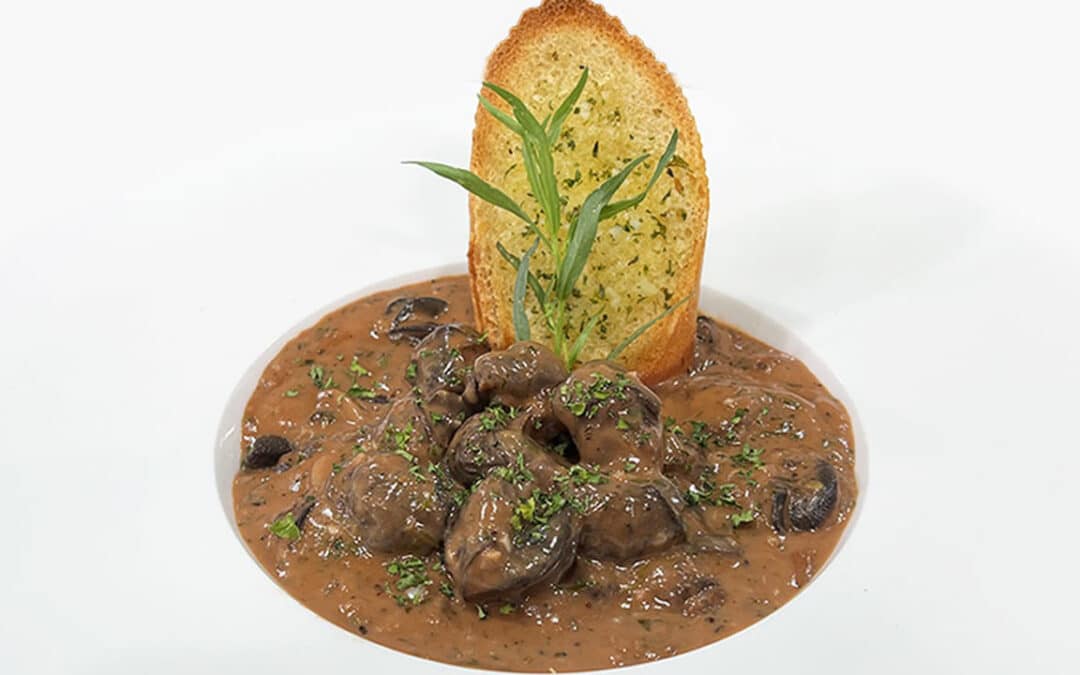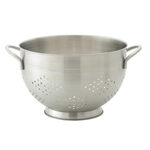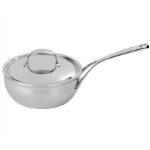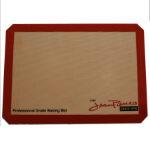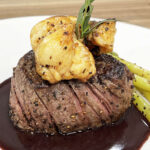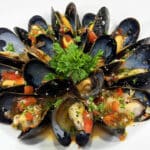Escargot Recipe (Without Shells): A Culinary Delight Unveiled

What is Escargot?
Escargot, a sophisticated name for cooked land snails, is often shrouded in mystery and misconceptions. Unlike the typical expectation of toughness, the secret to escargot’s tenderness lies in a meticulous preparation process.
Escargot, with its roots deeply planted in French cuisine, offers a gourmet experience that is both exotic and comforting. If you’ve ever savored the briny delicacy of oysters or the subtle taste of clams, prepare for escargot.
Origin and Best Serving Practices
Tracing back to the lush countryside of France, escargot has been a staple in luxurious dining. It’s not merely about the snails but the harmony of flavors encased in each bite.

Tender escargot bathed in this lush sauce presented not in their shells but with the inviting crunch of a fresh baguette on the side. It’s a testament to the beauty of simplicity and depth in flavors that French cuisine is renowned for.
Main and Side Dishes to Pair with Escargot
Escargot is a versatile starter that paves the way for an array of main courses. Whether it’s the rich layers of a beef bourguignon or the light, refreshing notes of a Provencal vegetable tart, escargot sets a high culinary bar.
For sides, think of crisp, green salads dressed in vinaigrette or buttery, garlic-infused mashed potatoes. These pairings not only complement the escargot but elevate the entire dining experience, creating a meal that’s memorable and balanced.
Pro-Tip:

Bonus Pro-Tip:
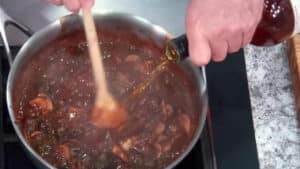
Remember, the essence of great French cooking lies in the quality and treatment of each component.
Join me in celebrating the elegance and simplicity of French cuisine with my Escargot Recipe. It’s more than a dish; it’s a journey into the heart of culinary artistry, promising moments of joy and discovery with every bite.
So let’s get cooking!

Escargot Left Bank
Recipe Video
Recipe Ingredients
For the Escargot:
- 1 can 96 Count of Escargot
- 1 Bottle of Chardonnay (use moderately priced)
- Salt and Pepper, to taste
- 6 - 7 Cloves of Garlic
- 4 - 5 sprigs of fresh Thyme
- 1 - 2 sprigs of fresh Tarragon, more for garnish
For the Sauce:
- 1 tablespoon Butter, plus 2 more tablespoons for finishing
- 1 large Shallot, finely chopped
- 8 ounces Mushrooms, sliced
- 2 tablespoons Garlic, chopped
- ¼ cup Flour
- 2 cups Red Wine, Chef uses Cabernet Sauvignon
- 1 tablespoon Thyme ,freshly chopped
- 1 tablespoon Tarragon, freshly chopped tarragon
- 1 ¼ cup Beef Stock
- ¼ cup Tomato Puree
- 2 tablespoons Parsley, fresh chopped
- 1 tablespoon Green Peppercorns
- ¼ cup Heavy Cream
- 2 tablespoons Cognac
For the Baguette Slices:
- Baguette slices
- Garlic Butter
Recipe Instructions
Cook the Escargot:
- Rinse escargot thoroughly under cold water to clean.
- Place them in a pot. and add Chardonnay to cover the escargot. Season with salt and pepper. Add garlic cloves, thyme, and tarragon.
- Bring to a boil, then reduce heat and simmer gently for 45 minutes to tenderize the escargot.
- Drain the wine and herbs branch and reserve to finish them in the sauce.
Make the Sauce:
- In a reduction pan, melt 1 tablespoon of butter over medium heat. Sauté shallot until translucent.
- Add mushrooms and cook until they release their moisture and brown slightly. Add garlic and mix well.
- Sprinkle with flour (if using instead of roux) and cook for another minute. Deglaze the pan with wine, allowing it to reduce by half.
- Add fresh thyme and tarragon, parsley, and stir in tomato puree. Add beef stock and let the sauce simmer 15 minutes until it thickens slightly.
- Add the reserved escargots, parsley, green peppercorns, cognac and cream. Bring to boil, turn the heat off, adjust seasoning and add more butter to taste.
- Adjust the sauce consistency with a small amount of cornstarch dissolved in water if necessary.
- Finish the sauce with additional butter off the heat until the sauce is glossy and smooth.
Prepare the Baguette:
- Spread baguette slices with garlic butter and toast under the broiler until golden brown.
You can find the items below used in making this dish at our online store!
Private Notes
Frequently Asked Questions About Escargot
1. What type of escargot is best for this escargot recipe?
Fresh or canned escargot can be used for cooking, depending on availability and preference. Canned escargot offers convenience and is pre-cooked, making it a practical choice for beginners or those short on time.
2. Do I need to clean escargot before cooking this escargot recipe?
Yes, if using canned escargot, it’s essential to rinse them under cold water to remove any brine or preserving liquids. This step ensures the best flavor and texture in your final dish.
3. How can I make my escargot tender, not rubbery?
Cooking escargot at a low temperature for a longer period helps ensure they become tender rather than rubbery. Overcooking at high heat can cause them to toughen.
4. What are the key ingredients for escargot sauce?
A traditional escargot sauce includes garlic, butter, and herbs like parsley and tarragon. Green peppercorns and Cognac add a unique flavor to the sauce, distinguishing it from the more common garlic butter versions.
5. Can this escargot recipe be prepared ahead of time?
Yes, escargot can be prepared up to a certain stage in advance, such as cleaning and the initial cooking in sauce. Before serving, they can be quickly broiled to heat through and brown the top.
6. What is the best way to serve escargot?
Escargot is traditionally served in shell or in mushroom caps, accompanied by crusty bread to soak up the sauce. Serving them in their shells adds a touch of elegance to the presentation.
7. What wine pairs well with escargot recipe?
A crisp, dry white wine, such as Chardonnay or Sauvignon Blanc, pairs beautifully with escargot, complementing the richness of the sauce and the earthiness of the snails.
8. Can I use frozen escargot in this recipe?
Yes, frozen escargot is a viable option. Thaw them in the refrigerator before use and ensure they are thoroughly rinsed and patted dry.
9. What are some common mistakes when cooking this escargot recipe?
Overcooking is a common mistake that can lead to rubbery escargot. Another is not rinsing canned escargot, which can result in a salty, metallic taste.
10. How do I store leftover escargot?
Leftover cooked escargot can be stored in an airtight container in the refrigerator for up to two days. Reheat gently to avoid overcooking.
11. Are escargot healthy?
Escargot is high in protein and low in fat, making it a healthy option when prepared with moderation in butter and salt.
12. Can this escargot recipe be made without alcohol?
While Cognac or wine adds depth to the sauce, it can be omitted or replaced with a non-alcoholic substitute like broth for a similar flavor profile.
13. What are alternative sauces for escargot?
Beyond the classic garlic butter, escargot can be prepared with tomato-based sauces, cream sauces, or even a pesto for a twist on tradition.
14. How do I incorporate this escargot recipe into a meal?
Escargot makes an excellent appetizer and pairs well with light salads, simple pasta dishes, or as part of a French-themed dinner party.
- Ultimate Guide to Pommes Anna Recipe - April 29, 2024
- Easy Limoncello Tiramisu Recipe: A Fresh Twist On A Classic - April 25, 2024
- Homemade Lemon Curd - April 22, 2024

